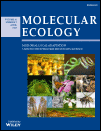Ver ítem
- xmlui.general.dspace_homeCentros Regionales y EEAsCentro Regional CorrientesEEA Bella VistaArtículos científicosxmlui.ArtifactBrowser.ItemViewer.trail
- Inicio
- Centros Regionales y EEAs
- Centro Regional Corrientes
- EEA Bella Vista
- Artículos científicos
- Ver ítem
Adaptation of genetically monomorphic bacteria : evolution of copper resistance through multiple horizontal gene transfers of complex and versatile mobile genetic elements
Resumen
Copper-based antimicrobial compounds are widely used to control plant bacterial pathogens. Pathogens have adapted in response to this selective pressure. Xanthomonas citri pv. citri, a major citrus pathogen causing Asiatic citrus canker, was first reported to carry plasmid-encoded copper resistance in Argentina. This phenotype was conferred by the copLAB gene system. The emergence of resistant strains has since been reported in R_eunion and Martinique.
[ver mas...]
Copper-based antimicrobial compounds are widely used to control plant bacterial pathogens. Pathogens have adapted in response to this selective pressure. Xanthomonas citri pv. citri, a major citrus pathogen causing Asiatic citrus canker, was first reported to carry plasmid-encoded copper resistance in Argentina. This phenotype was conferred by the copLAB gene system. The emergence of resistant strains has since been reported in R_eunion and Martinique. Using microsatellite-based genotyping and copLAB PCR, we demonstrated that the genetic structure of the copper-resistant strains from these three regions was made up of two distant clusters and varied for the detection of copLAB amplicons. In order to investigate this pattern more closely, we sequenced six copper-resistant X. citri pv. citri strains from Argentina, Martinique and R_eunion, together with reference copper-resistant Xanthomonas and Stenotrophomonas strains using long-read sequencing technology. Genes involved in copper resistance were found to be strain dependent with the novel identification in X. citri pv. citri of copABCD and a cus heavy metal efflux resistance–nodulation–division system. The genes providing the adaptive trait were part of a mobile genetic element similar to Tn3-like transposons and included in a conjugative plasmid. This indicates the system’s great versatility. The mining of all available bacterial genomes suggested that, within the bacterial community, the spread of copper resistance associated with mobile elements and their plasmid environments was primarily restricted to the Xanthomonadaceae family.
[Cerrar]

Autor
Richard, Damien;
Ravigné, V.;
Rieux, A.;
Facon, B.;
Boyer, Claudine;
Boyer, K.;
Grygiel, P.;
Javegny, S.;
Terville, M.;
Canteros, Blanca Isabel;
Robène, I.;
Vernière, Christian;
Chabirand, A.;
Lefeuvre, Pierre;
Pruvost, Olivier;
Fuente
Molecular ecology 26 (7) : 2131-2149. (2017)
Fecha
2017-02
ISSN
1365-294X
Formato
pdf
Tipo de documento
artículo
Palabras Claves
Derechos de acceso
Restringido
 Excepto donde se diga explicitamente, este item se publica bajo la siguiente descripción: Creative Commons Attribution-NonCommercial-ShareAlike 2.5 Unported (CC BY-NC-SA 2.5)
Excepto donde se diga explicitamente, este item se publica bajo la siguiente descripción: Creative Commons Attribution-NonCommercial-ShareAlike 2.5 Unported (CC BY-NC-SA 2.5)

